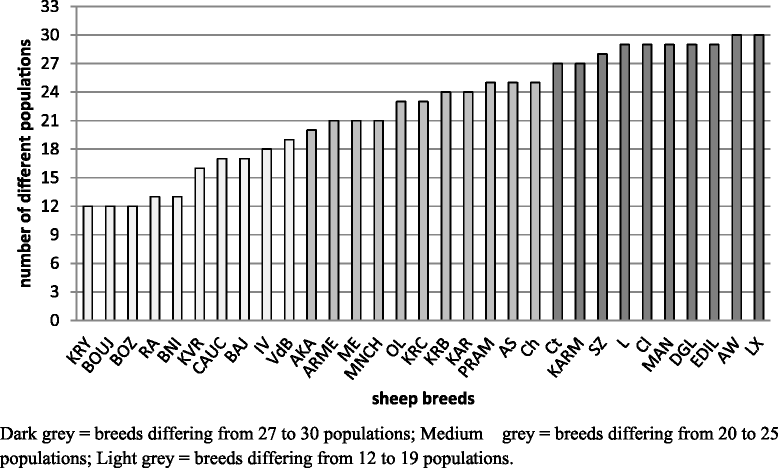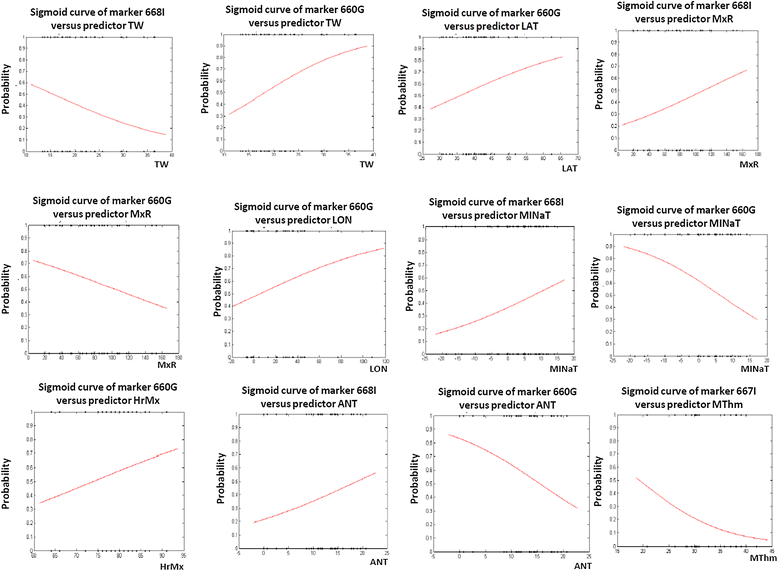Looking for adaptive footprints in the HSP90AA1 ovine gene
- PMID: 25648535
- PMCID: PMC4351680
- DOI: 10.1186/s12862-015-0280-x
Looking for adaptive footprints in the HSP90AA1 ovine gene
Abstract
Background: Climatic factors play an important role in determining species distributions and phenotypic variation of populations over geographic space. Since domestic sheep is managed under low intensive systems animals could have retained some genome adaptive footprints. The gene encoding the Hsp90α has been extensively studied in sheep and some polymorphisms located at its promoter have been associates with differences in the transcription rate of the gene depending on climatic conditions. In this work the relationships among the distribution and frequencies of 11 polymorphisms of the ovine HSP90AA1 gene promoter in 31 sheep breeds and the climatic and geographic variables prevailing in their regions of origin have been studied. Also the promoter sequence has been characterized in 9 species of the Caprinae subfamily.
Results: Correlations among several climatic variables and allele frequencies of the polymorphisms of the HSP90AA1 gene promoter linked with differences in the transcription activity of the gene under heat stress conditions have been assessed. A group of breeds reared in semi dry climates have high frequencies of the insertion allele of the g.667-668insC associated with the heat stress response. Other group of breeds native to semi arid conditions showed very low frequencies of this same allele. However, in some cases, this previous correlation has not been achieved, revealing the high levels of gene flow among populations occurred following domestication. The Bayesian Test of Beaumont and Balding identified two outlier loci, the g.522A > G and g.703_704del(2)A candidates to balancing and directional selection, respectively. Polymorphisms detected in O. aries are also present in several species of the Caprinae subfamily being C. hircus, O. musimon and O. moschatus those sharing the highest number of them with O. aries.
Conclusions: Despite domestication, sheep breeds showed some genetic footprints related to climatic variables. Adaptation of breeds to heat climates can suppose a selective advantage to cope with global warming caused by climatic change. Polymorphisms of the HSP90AA1 gene detected in the Ovis aries species are also present in wild species from the Caprinae subfamily, indicating a great antiquity of these mutations and its importance in the adaptation of species to past climatic conditions existing in its native environments.
Figures






References
-
- Shackleton DM. Wild Sheep and Goats and Their Relatives: Status Survey and Conservation Action Plan for Caprinae. 1997.
Publication types
MeSH terms
Substances
LinkOut - more resources
Full Text Sources
Other Literature Sources
Molecular Biology Databases
Miscellaneous

